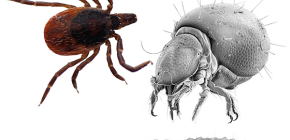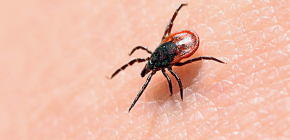About ticks

The activity of ticks in the forest is directly dependent on the ambient temperature. Let's see what happens to them at low temperatures during the cold winter, how these parasites survive in severe frosts and can they be dangerous to humans and animals during the cold season ...

The activity of forest ticks to find their prey has a pronounced seasonal nature. Thus, in our country, the tick season begins in early spring and ends in late autumn, but during this time there are certain periods when the danger of an attack of parasites is highest. Let's see which factors influence the behavior of ticks in the first place and in which months special care should be taken during their stay in nature ...

Ixodic ticks are temporary ectoparasites, the life cycle of which consists of 4 stages. Each stage of development (egg, larva, nymph, imago) is characterized by its specificity, which we will further examine in more detail, also touching upon the danger of all intermediate forms of the parasite for humans and animals ...

Few parasites can compete with ticks on the variety of forms of parasitism - here you can find examples of both ecto-and endoparasitism, permanent and temporary, obligate and optional, single-farm, two-farm and three-farm types. Next, we consider the interesting nuances of tick parasitology in more detail, including from an evolutionary point of view ...

As the name implies, the main habitat of the taiga tick (Ixodes persulcatus) is taiga. However, the spread of the parasite covers many other natural areas - it can easily be found in deciduous forests, and even in a small city park. Next, we will talk about the interesting features of the biology of the taiga tick, allowing it to successfully parasitize on a variety of animals, and also touch on the danger of parasite bites to humans ...

The reproduction of forest ticks involves a rather complex life cycle, during which the parasite host changes several times, and the next victim may well be a person or a pet. With favorable environmental factors, outbreaks of mass reproduction of ticks can be observed, which in some cases represents a serious epidemiological hazard (it is understandable - at any one time the parasite's female can lay up to 2000 eggs to be laid). We will continue to discuss these and some other interesting points in more detail ...
